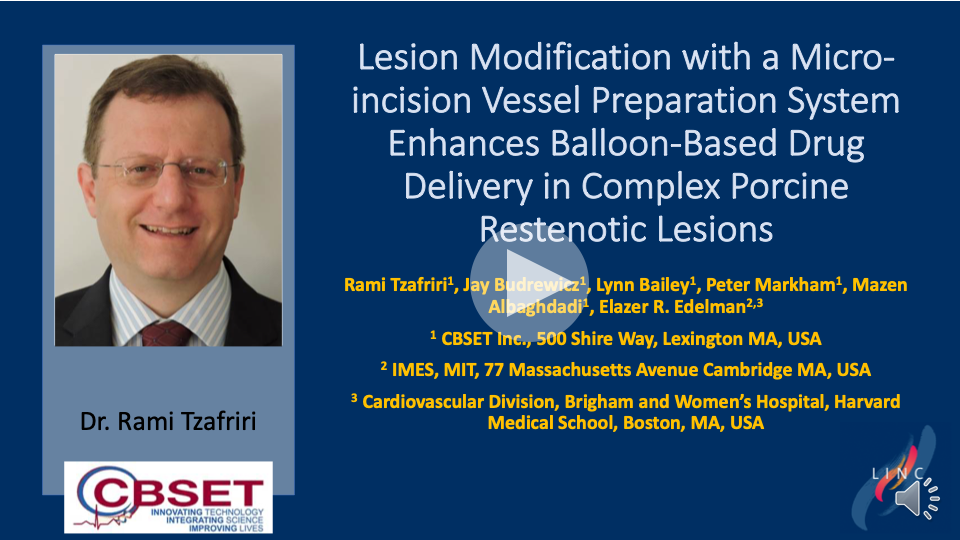Rami Tzafriri, Jay Budrewicz, Lynn Bailey, Peter Markham, Maxen Albaghdadi, Elazer Edelman. Lesion Modification with a Micro-Incision Vessel Preparation System Enhances Balloon-Based Drug Delivery in Complex Porcine Restenotic Lesions.
Live presentation abstract:

This study examined if and how a vessel preparation system delivering micro-incisions could enhance in vivo paclitaxel (delivered from a DCB) retention in a complex porcine ISR lesion model design. Optical coherence tomography (OCT) images of the baseline ISR images confirmed barriers to delivery of DCB therapy. The animals were either (a) imaged by OCT and treated with a DCB and then re-imaged, or (b) imaged by OCT, re-imaged after micro-incisions were delivered by the FLEX VP System, treated with DCB and then re-imaged again. The animals were survived to 1, 15 or 30 days and the treated arteries then were processed to measure retention of paclitaxel concentrations.
Study findings:
- OCT imaging of ISRLs revealed smooth stenotic surfaces posing significant barriers to penetration as evidenced by remarkably low paclitaxel concentrations at 1 day in standard vessels (<0.9 ng/mL).
- OCT imaging of the lesions treated with the FLEX VP System demonstrated atraumatic micro-incisions along the length and circumference of the vessels, with no dissections, and enhanced tissue retention of paclitaxel as compared to the vessels treated with DCB alone.
Presented at LINC 2021 Virtual Edition, January 25-29, 2021

